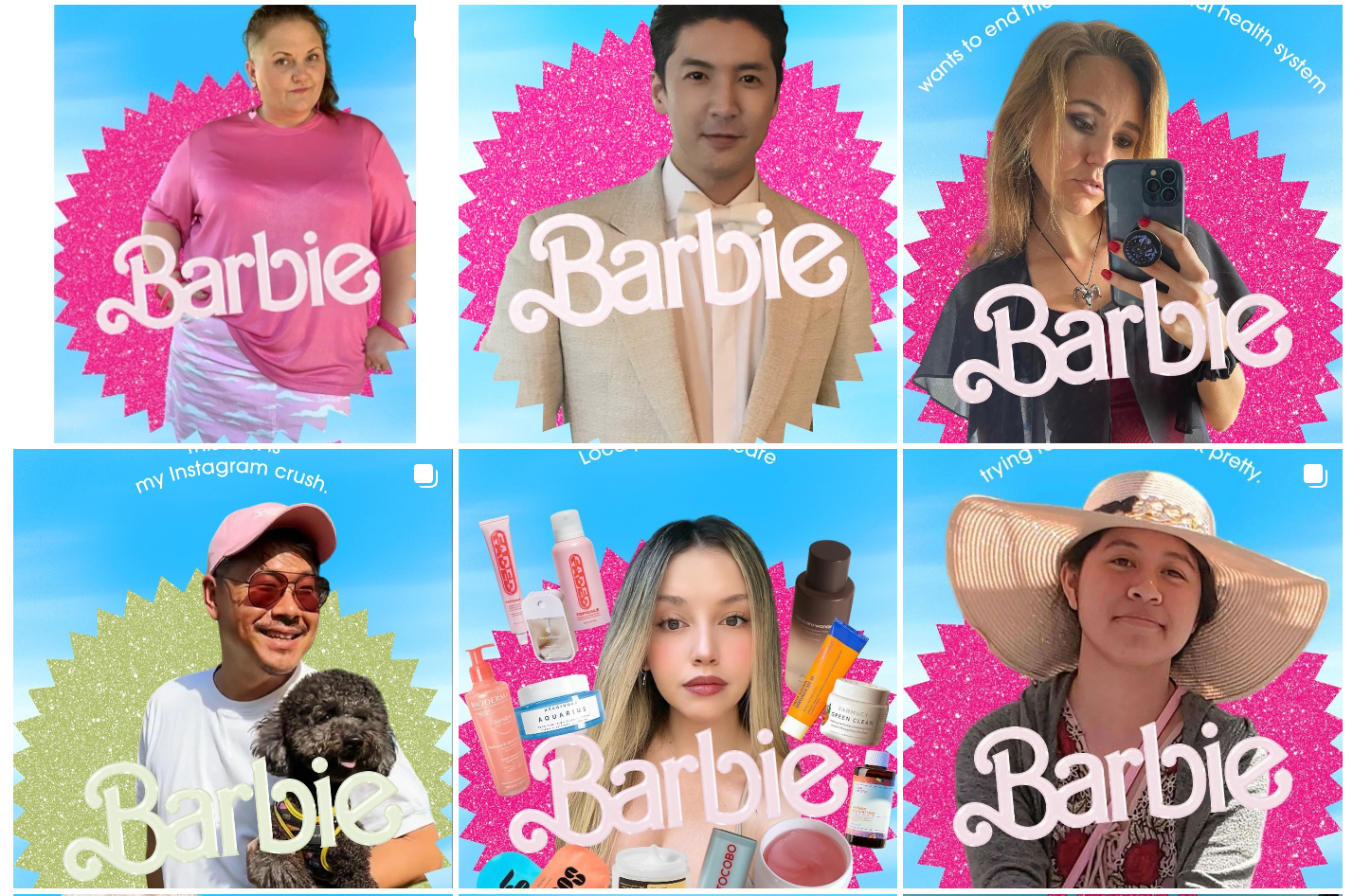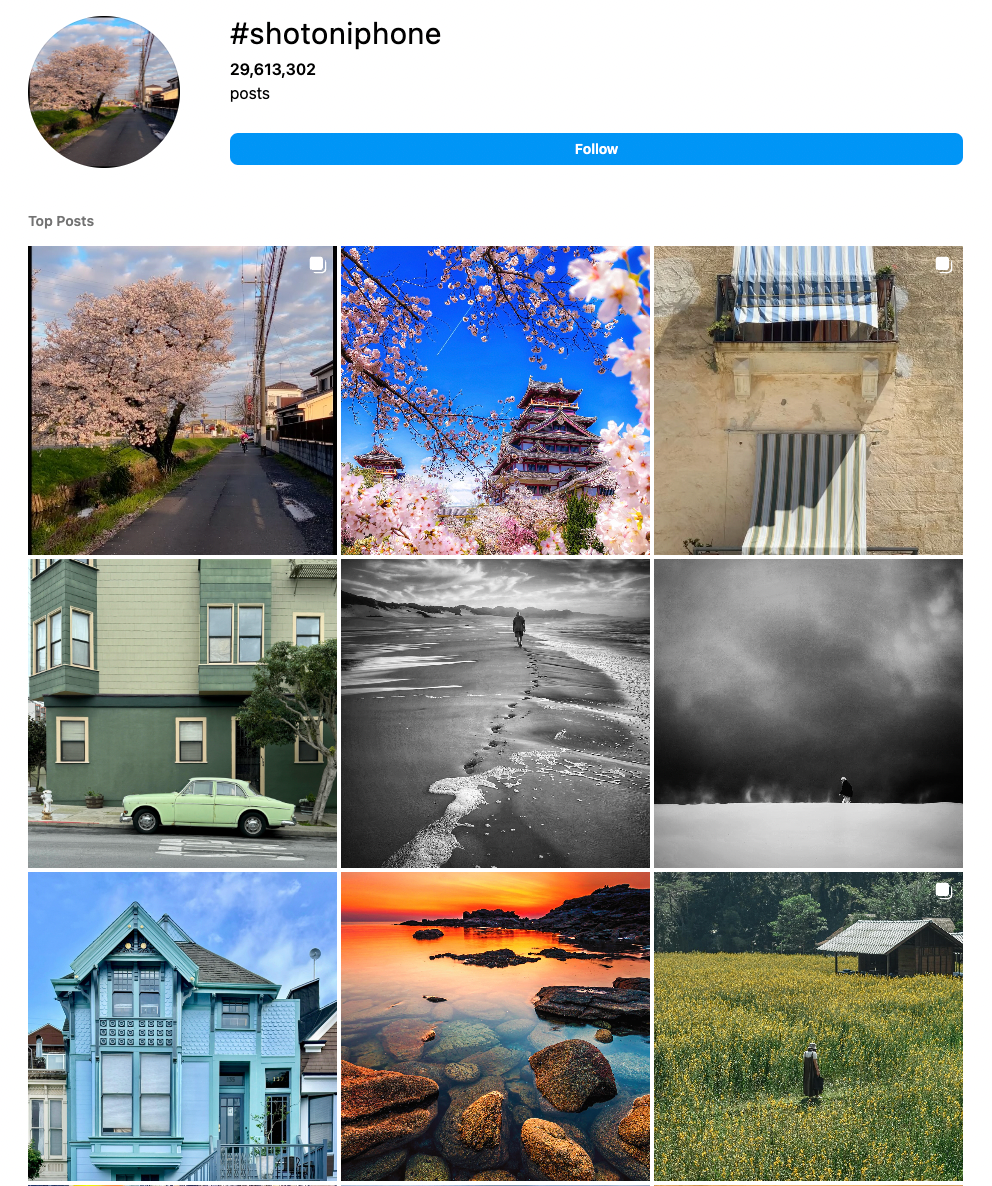Successful social media campaigns are an effective marketing tactic. They can spark engagement, inspire conversation, build community, and drive sales.
The ones that break through the noise can be those that announce launches, celebrate milestones, or mark a calendar event.
Here are 12 noteworthy social media campaign examples by companies ranging from small businesses to major brands, plus takeaways to implement for your own campaigns.
12 social media campaign examples
- Spotify Wrapped
- Strava’s Year in Sport
- Duolingo’s Adoption Center
- Year in Monzo
- Barbie’s AI-powered selfie-generator tool
- Olipop’s Sleep Girl Mocktails
- Folklor’s weekly product drop
- loungefit.’s behind-the-scenes videos
- Apple’s #ShotOniPhone
- Maude’s Sex Ed For All
- Patagonia’s people-first posts
- Bombas’s Bee Better
1. Spotify Wrapped
What was the campaign?
Spotify’s yearly Wrapped campaign is a firm favorite on the social calendar. Each December, users get a personalized breakdown of their year in music, including the bands and songs they listened to most and their top genres. The data is shared in a visual Instagram Stories style that users can easily share to their own social channels.
Why was it successful?
Two things make Spotify Wrapped so successful:
- It’s personalized
- It’s shareable
People love to feel special. In fact, 56% of consumers say they become repeat buyers after a personalized experience—so that’s exactly what Spotify tapped into. Users were keen to share their unique music journey with friends and family, which increased the reach of the campaign and generated a snowball effect.
How can you implement it on social media?
Spotify Wrapped’s biggest flex is its easily shareable format and bite-size chunks of data repurposed into visual stories. If you can, look at app usage or purchase history to create a personalized customer highlights reel—something they can quickly and easily share on their favorite social media channels.
2. Strava’s Year in Sport
What was the campaign?
At the end of each year, Strava collects data from its users to create a comprehensive report about the state of sport. Alongside this, it celebrates top athletes through its awards campaign and promotes new ways for people to work out.
Why was it successful?
Strava’s Year in Sport campaign creates a sense of community among its users. They can see how their sports stats align with other users and feel part of something bigger. Most importantly, Strava uses the findings from the yearly report to populate its social channels. It sprinkles stats and statistics among its Instagram and TikTok feeds to prove its authority in the athletics industry.
How can you implement it on social media?
Start by surveying your users to create a comprehensive report on your industry or product. You can use your findings to create social content throughout the year, but it can also act as great inspiration for your future posts and product updates.
3. Duolingo’s Adoption Center
What was the campaign?
When Netflix announced it was no longer allowing password sharing, Duolingo piggybacked onto the uproar by encouraging people to add a family member to their language-learning account. The aim was to get more people to learn a language while clearly stating where it stood on Netflix’s U-turn.
Why was it successful?
For starters, the campaign jumped on the publicity of Netflix’s announcement. It took a negative and turned it into a positive, which made the brand look good and generated new signups at the same time.
How can you implement it on social media?
Piggyback on an announcement from a bigger brand. Listen to what your competitors are doing and identify areas they could improve—and then improve them yourself. Listen to your customers, too. If there’s controversy around something, think about how you can use that to your advantage and make your brand look like the better option.
4. Year in Monzo

What was the campaign?
UK-based bank Monzo jumped on the “year in review” bandwagon to create personalized reports for its users. But seeing how much money you spend isn’t quite the same as seeing what bands you listen to—luckily, Monzo made it lighthearted, assigning people fun, tongue-in-cheek roles based on their yearly spending habits.
Why was it successful?
Similarly to Spotify’s Wrapped, Year in Monzo was successful because it was personalized and humorous. People likely wouldn’t have shared their exact banking numbers with their friends and family, but they were OK sharing whether they were Starbucks’ biggest fan or what era they were in (like their Social Butterfly Era if they’d been out a lot).
How can you implement this on social media?
There are two ways you can do this. You can aggregate user data to create unique, shareable stories, but you can also turn confronting information into something lighthearted. This was a chance for Monzo to spotlight its personality, and it certainly managed to do that.
5. Barbie’s AI-powered selfie-generator tool

What was the campaign?
Barbie was all over the media in 2023—the movie’s ad team was on fire. But one of the most popular campaigns was the AI-powered selfie-generator tool that lets social media users create a Barbie poster of themselves.
Why was it successful?
The shareable nature of the tool made it easy for the word to spread quickly. As soon as someone saw a friend or family member posting their version, they’d automatically want to see what their own Barbie poster would look like. This helped boost the reach of the campaign while encouraging fans to feel like they were a part of the movie release.
How can you implement this on social media?
The crux of this great social media campaign was simple—a template that users could AI-generate their selfies onto. You can create a backdrop, sticker, or poster design and encourage followers to add their own mark to it with a selfie or another type of photo.

Social media strategy and planning templates
Ready to get started with your social media strategy? These free, customizable templates give you tools to plan and execute a strategy that connects you with your target audience while keeping your content calendar organized.
6. Olipop’s sleepy girl mocktail
What was the campaign?
After TikToker Grace Norton posted a recipe for a mocktail including Olipop’s Lemon Ginger flavor, the brand decided to capitalize on the success of the viral concoction. Olipop partnered with Norton to create more delicious recipes to feature in its Dry January “Mocktails in Minutes” campaign.
Why was it successful?
Olipop saw an opportunity and joined the conversation. After Norton went viral, the brand encouraged more creators to share their Olipop-inspired recipes. It started a challenge that took advantage of the sleepy girl mocktail trend, which led to more than 600 people posting about Olipop’s flavored soda.
How can you implement this on social media?
Either jump on existing trends or keep an eye out for people who are talking about your brand. Partnering with social media accounts already promoting your products can help you reach new audiences and build awareness around your brand.
7. Folklor’s weekly product drop
What was the campaign?
Because it sells preloved pieces, Folklor operates on a system of weekly product drops. The business uses Instagram to seed the drop every week. “For it to be a successful drop, I need to start teasing it four days before,” says Megan Mensink, Folklor’s founder. “And then it just works for me. I always follow that cadence and different formats.” Working off this framework, the brand consistently reveals a new slew of items each week—fueling the curious minds of followers and folks who want to see what will be in stock next.
Why was it successful?
Dropping a limited number of products every week creates a sense of exclusivity and scarcity. This helps generate a buzz around Folklor’s brand and products. The consistency of the drop also creates a sense of anticipation in the lead-up to the weekly announcement.
How can you implement this on social media?
A weekly product drop is a great model if you ship preloved or vintage pieces. People, especially social media users, value consistency. Choose one day a week on which you’ll release new products, and stay consistent. Eventually, followers will expect your drop on that day and might check in, hopeful to find what they’ve been searching for. For folks who sell new items, this can be something you use to launch specialty lines.
8. loungefit.’s behind-the-scenes videos
What is the campaign?
Clothing brand loungefit. has a huge following on TikTok through sharing behind-the-scenes videos. The content shows how the founder designs a product line, what packing a $300 order looks like, and other behind-the-scenes content that gives fans an unusually transparent insight into how the brand operates.
“Initially, 80% of my sales came from TikTok,” Andre says, “and [posts] wouldn’t have to be me promoting the product. It could just be me doing a day-in-the-life video where people like the outfit [I’m] wearing.” Andre sprinkles these videos throughout TikTok, giving followers a peek into what it’s really like to run your own business each day.
Why was it successful?
Loungefit.’s TikTok content is authentic and genuine. It answers the real questions people have and makes its followers feel important. This creates deeper connections and instills trust—and, therefore, helps the brand sell more products.
How can you implement this on social media?
Go beyond product-led content. Sprinkle in videos and behind-the-scenes footage of how you make your product, what goes into your products, and the processes that make your business run successfully.
9. Apple’s #ShotOniPhone

What was the campaign?
You’ve likely seen one of Apple’s billboards, complete with a breathtaking image, only to learn that it was actually shot on an iPhone. Enter Apple’s #ShotOniPhone social media campaign.
This UGC (user-generated content) campaign is the entire focus of Apple’s Instagram account. #ShotoniPhone demonstrates the high quality of an iPhone camera through real images taken by users.
Why was it successful?
Apple’s Shot On iPhone campaign does two things. First, it creates a community of people who are taking and sharing photos. Second, it promotes an important product feature—the camera. The campaign initially started as a way to prove naysayers wrong about the quality of the iPhone’s camera and it has continued to be a key marketing tool for the brand.
How can you implement this on social media?
The Apple campaign is based on UGC. It’s an effective social media campaign to learn from if you’re interested in harnessing UGC for your business. Ask your customers to share images of them using your products, whether that’s every day or in creative ways, and create a campaign that involves sharing them on your social media channels.
10. Maude’s Sex Ed For All
What was the campaign?
Maude sells intimacy and sexual wellness basics in sleek designs made with premium ingredients. Its brand is based on three central principles: simplicity, quality, and inclusivity.
Connected to its brand mission of promoting sexual wellness, Maude launched a campaign called Sex Ed for All, in partnership with SIECUS and Advocates for Youth. The campaign advocates and raises awareness for the need for real sexual education access, as well as the current lack of critical education around sexual health and wellness.
Why was it successful?
The brand used its platform to share a cause close to its heart. By showcasing its values and beliefs, it was able to create deeper connections with followers who share those values while raising brand awareness at the same time.
How can you implement this on social media?
Consider the impact you’d like to have as a business, and if there are any organizations you’d like to partner with. How can you leverage your engagement, reach, and following to surface and bring awareness to issues that resonate with you and your brand?
11. Patagonia’s people-first social posts
What was the campaign?
Patagonia is well-known for its dedication to sustainability—its Worn Wear initiative invites customers to repair their purchases rather than buy new ones, and it follows this trend on TikTok. Its people-first videos show folks who are doing great things for the planet and spotlight environmental concerns through powerful, high-quality footage.
Why was it successful?
Patagonia’s content isn’t about its products, it’s about people. These videos get high levels of engagement because they resonate with a lot of people, and as a result, the brand gets more eyeballs on its products and becomes an authority.
How can you implement this on social media?
Focus on sharing people-led stories with your social media content. For example, you could spotlight your manufacturers or what the people who work for your business do when they’re not working.
12. Bombas’s Bee Better
What was the campaign?
The sock brand Bombas is on a mission to reduce homelessness in the US. The brand’s Bee Better marketing campaign aims to shine a light on the seriousness of the issue by sharing stories from unhoused individuals across the country and revealing statistics about the problem.
Why was it successful?
The brand chose a cause that’s close to its heart but that also relates closely to its products—socks are the most commonly requested item in homeless shelters. For every pair of socks bought, Bombas donates a pair to homeless charities. This act of giving builds trust and credibility while helping the brand connect with customers who truly value its plight.
How can you implement this on social media?
Don’t just promote a cause for the sake of it. Choose one that you truly believe in or that aligns with your brand goals and mission and reference it throughout your social media updates.
Boost your social media strategy in 2024
This collection of examples show there are no limits to what you can do with your next social media campaign. From posts spotlighting important environmental concerns to AI-powered selfie-generators, anything goes. Take inspiration from these successful examples to make unique campaigns part of your social media marketing strategy this year.
Read more
- 25+ Ideas for Online Businesses To Start Now (2024)
- How to Write a Perfect Business Plan in 9 Steps
- How To Make Your First Ecommerce Sale—Fast (Tutorial 2024)
- Which Social Media Platforms Drive the Most Sales? [Infographic]
- The 12 Best Free Video Editing Software for 2024
- The 5 Elements of a Strong Brand Strategy
- TikTok Success Stories- 9 Small Businesses That Went Viral
- My Starting-Over Story- How I Rediscovered Creativity After Trauma
- Marketing Objectives- How to Set Good Marketing Objectives
- How Investing in SEO Can Grow Your Ecommerce Site Traffic
Social media campaign examples FAQ
What are some examples of social media marketing campaigns?
Here are some recent social media campaign examples:
- Spotify’s Wrapped
- Strava’s Year in Sport
- Duolingo’s Adoption Center
- Year in Monzo
- Barbie’s AI-powered selfie-generator
- Olipop’s Sleepy Girl Mocktail
- Folklor’s weekly product drop
- loungefit.’s behind-the-scenes videos
- Apple’s #ShotOniPhone
- Maude’s Sex Ed For All
- Patagonia’s people-first posts
- Bombas’s Bee Better
How do I create a social media campaign?
Here are the steps for creating a social media campaign:
- Choose an idea to center your campaign around.
- Establish a goal.
- Come up with a catchy tagline.
- Think about how many pieces of content you’ll need.
- Decide on a design.
- Interview featured folks.
- Schedule and post your campaign.
- Measure results and engage with comments.





